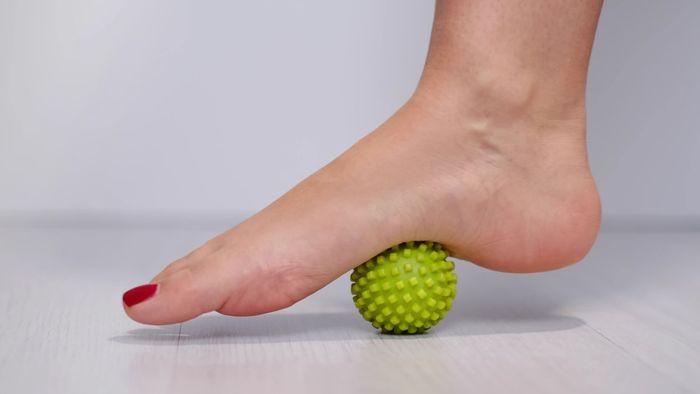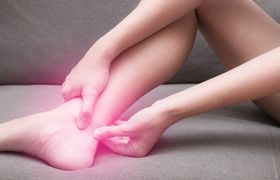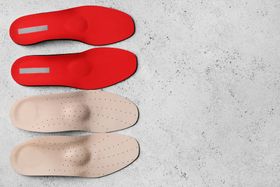Best Exercises and Stretches for Metatarsalgia Pain Relief
Updated February 26, 2024.

Metatarsalgia refers to pain that occurs in the ball of the foot, and it affects the regular body mechanics, making daily activities difficult to perform. The major cause of metatarsalgia is excessive and repetitive loading of the foot. This can be due to intense physical activity like running and jumping, improper footwear, high arches, foot deformities, and obesity (overweight).
This guide covers the best metatarsalgia exercises. For a more general blog about metatarsalgia, read What Is Metatarsalgia: Symptoms, Causes, Treatments, and More.
How Stretching and Strengthening Exercises Relieve Metatarsalgia Pain
Generally, stretches and exercise can improve the quality of life for metatarsalgia patients through the following potential benefits:
- Stimulated healing by increasing blood flow and, consequently, healing white blood cells to the area
- Reduced pain and swelling in the ball of the foot
- Improved range of motion within the ankle, foot, and knee joints
- Improved balance, strength, and muscle coordination
- Improved gait mechanics
Stretches for Metatarsalgia
Several stretches can be performed to increase the flexibility at the foot and ankle. Three common ones are:
1. Toe Pumps
- From a seated position, prop your foot on your heels so that your toes are off the floor
- Continuously bend and extend the toes while moving the foot backward and forwards slightly
- Repeat 20 times for 2-3 sets
2. Toe Flexor Stretch
- Sit in a chair with the affected foot bent over the knee of the other leg so you can reach your toes with your hands
- Using the palm of your hand as support, bend your toes towards your shin
- Hold the position where you feel a strong stretch in the bottom of the foot for up to 30 seconds
- Continue for 2-3 sets with 15-20 reps each
3. Sitting Calf Stretch
- From a sitting position, wrap a stretch strap, towel, or belt under the ball of your foot
- While keeping the knee straight on the surface, use the belt, strap, or towel to pull the toes up toward the shin
- You’ll feel a stretch at the back of the ankle around the Achilles tendon
- Hold this position for up to 30 seconds and then relax
- Repeat up to 5 times for 2-3 sets per leg
Exercises for Metatarsalgia
The level of exercise you can perform will depend on how much pain you have and how physically fit you are. As a precaution, you want to avoid any high-impact exercises to limit loading the feet. You also want to ensure you use proper fitting footwear during the exercises and avoid direct pressure on the painful area.
Once these precautions are taken, there are three critical exercises to perform to reduce the symptoms of metatarsalgia:
1. Toe Raises
This may prove uncomfortable if you still have a lot of pain in the ball of your foot; otherwise, it won’t be a problem.
- Stand erect, holding on to a chair or wall for balance
- Lift your heels off the ground, transferring weight gradually to the ball of your foot
- Gradually lower your heel back to the ground
- Repeat 10-15 times for 2-3 sets
You can progress to doing this exercise on only one leg at a time as your strength increases.
2. One-Leg Stance
- Standing near a wall or chair for balance
- Slowly transfer your weight to a foot and lift the other foot off the ground
- Ensure the foot is resting firmly on the ground and hold the position for 30-60 seconds
- Repeat on the alternate leg for 1 completed set
- Repeat the entire set 2-3 times
3. Towel Scrunches
- Stand bare-footed with a foot on a towel
- With your knee slightly bent, use your toes to pull the towel under your foot without raising your heels
- Repeat 3 sets of 15 reps for each foot
Managing Metatarsalgia Pain
Thankfully, metatarsalgia is responsive to treatment. In addition to exercises, you can use NSAIDs, rest, ice, activity modification, weight reduction, and splinting to relieve symptoms of the condition. Pain can be addressed at home, though intervention must be gradual and progressive to reap the most benefit. By so doing, the body can build up strength and increase flexibility over time.
Also, inserts can be used with properly fitting shoes to cushion and support the foot, thereby easing metatarsalgia. Custom orthotic inserts tailored to your feet can be attained through our online store.









